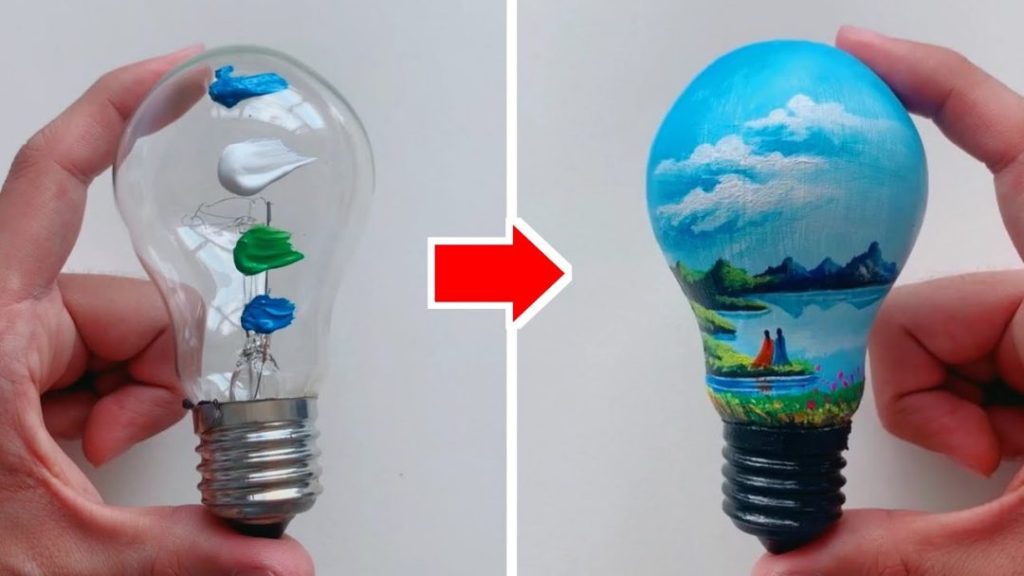Can you Paint LED Light Bulbs?

Have you ever wanted to change the color of your LED light bulbs to match your new home decor or business design scheme? While it may seem like a simple task, painting LED light bulbs is not as straightforward as you might think. There are various factors to consider before attempting to paint them, as well as the proper methods and materials to use.
Want to know more about whether can you paint LED light bulbs and how to do it safely and effectively? Keep reading to find out!
Can You Paint LED Light Bulbs?
Yes, it is possible to paint LED light bulbs, but it is not recommended. LED light bulbs are made with a variety of materials and coatings that are not meant to be painted. These coatings and materials are crucial for the proper functioning and lifespan of the bulb.
When painting an LED light bulb, it is important to be aware that the paint may interfere with the light output, electrical components, and overall performance of the bulb. Additionally, the paint may not adhere properly to the bulb, resulting in a poor finish and potentially damaging the bulb.
Factors to Consider Before Painting LED Light Bulbs
Before attempting to paint LED light bulbs, there are several factors to consider.
Material and Coating
LED light bulbs are made with a variety of materials, such as plastic, glass, and metal. Each material requires a specific type of paint and application method.
In addition to the material, LED light bulbs also have a variety of coatings that are applied to protect the bulb and improve its performance. These coatings, such as epoxy or polycarbonate, may not be compatible with certain types of paint and can affect the adhesion and durability of the paint.
Heat Dissipation
LED light bulbs generate heat during operation, and it is important that this heat is dissipated properly to prevent damage to the bulb and ensure its longevity. The paint applied to the bulb may affect its ability to dissipate heat, potentially leading to overheating and failure.
Light Output
One of the main benefits of LED light bulbs is their high efficiency and brightness. However, the paint applied to the bulb may affect its light output, resulting in dimmer or less consistent light.
Electrical Components
LED light bulbs have intricate electrical components that are essential for their proper functioning. The paint applied to the bulb may interfere with these components, potentially causing damage or failure.
Also read: How to reset Smart Bulbs in Easy Steps
Step-by-Step Method to Paint LED Light Bulbs

If you still decide to paint an LED light bulb after considering the above factors, it is important to use the proper methods and materials to minimize the risk of damaging the bulb.
Clean the Surface
Before beginning to paint the bulb, it is important to properly prepare the surface. This includes cleaning the bulb with a mild detergent and drying it thoroughly. Any dirt or residue left on the bulb may affect the adhesion and durability of the paint.
Apply Primer
Applying a primer to the bulb can help improve the adhesion and durability of the paint. It is important to use a primer that is compatible with the material and coating of the bulb.
Select the Paint
When selecting paint for an LED light bulb, it is important to choose a high-quality, heat-resistant paint that is specifically designed for use on the material and coating of the bulb. Avoid using spray paints or paints with a high VOC (volatile organic compound) content, as these may affect the performance of the bulb.
Paint LED Light Bulb
Remember, it is important to apply the paint in thin, even layers to avoid excess buildup and ensure proper coverage. Be sure to allow the paint to dry completely between layers to prevent drips and ensure a smooth finish.
When applying the paint, it is important to avoid getting paint on the electrical components or the base of the bulb. This can interfere with the functioning of the bulb and potentially cause damage.
Finishing
After the final layer of paint has been applied and allowed to dry, it is important to apply a clear coat to protect the paint and improve its durability. As with the primer and paint, it is important to use a clear coat that is compatible with the material and coating of the bulb.
Alternatives to Painting LED Light Bulbs
If you are looking to change the color of your LED light bulbs but are hesitant to paint them, there are several alternatives to consider.
Color Changing LED Light Bulbs
There are now LED light bulbs available that can change colors, allowing you to easily switch between different shades and hues. These bulbs often come with a remote or app for easy control.
LED Light Bulb Covers
Another option is to use LED light bulb covers, which are plastic or glass sleeves that fit over the bulb and change its color. These covers are often easy to install and remove, allowing you to switch between different colors as desired.
LED Light Bulb Filters
LED light bulb filters are another option for changing the color of your bulbs. These filters are placed over the bulb and change the color of the light output. They are often easy to install and remove, making them a convenient option for quickly changing the color of your bulbs.
Conclusion
In conclusion, while the idea of painting LED light bulbs may seem like a viable option for customizing the color and intensity of your lighting, it is important to approach this task with caution. LED bulbs, although cooler than traditional incandescent bulbs, still generate heat that can affect the paint applied to their surface. Using non-heat-resistant paints can lead to the emission of toxic fumes, peeling, or discoloration when the bulb is in use. Moreover, painting the bulb improperly can interfere with its designed light output, potentially diminishing the brightness and altering the color in unintended ways. Therefore, it is crucial to use paints specifically formulated for high temperatures and to apply them carefully so as not to cover the LED chip itself, ensuring that the bulb’s functionality and safety are not compromised.
Furthermore, for those looking to achieve different lighting effects or colors, considering alternative methods such as using colored lamp shades or covers might provide a safer and more effective solution. These accessories can offer the desired change in ambiance without the risk associated with painting the bulbs directly. For specialized applications where painted bulbs are necessary, consulting with lighting professionals or manufacturers can provide guidance on suitable products and techniques that maintain the safety and efficiency of the LEDs. Ultimately, while customizing LED bulbs can be appealing, preserving their efficiency, safety, and longevity should always be the priority. Exploring alternative decorative options or purchasing LEDs that already come in the desired colors and intensities is often a more advisable approach.
To summarize, while it is possible to paint LED light bulbs, painting LED light bulbs is not a good idea as it can affect their performance and lifespan. If you want to change the color of your LED light bulbs, it is better to use color-changing bulbs, covers, or filters. These options allow you to alter the appearance of your lighting without damaging the bulbs.






